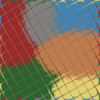I'm trying to write an opengl program that need to use pure software rendering for some test reasons.
But i just can't find a common way to force opengl using CPU only even if it's running on the platform that equipped with a GPU.
manually set compatibility profile or set the version of opengl into an older version (like 1.4) seems not work.
So is there any “official” or “recommended” way to achieve that (better if it's cross-platform)? Or any platform specified solutions?











